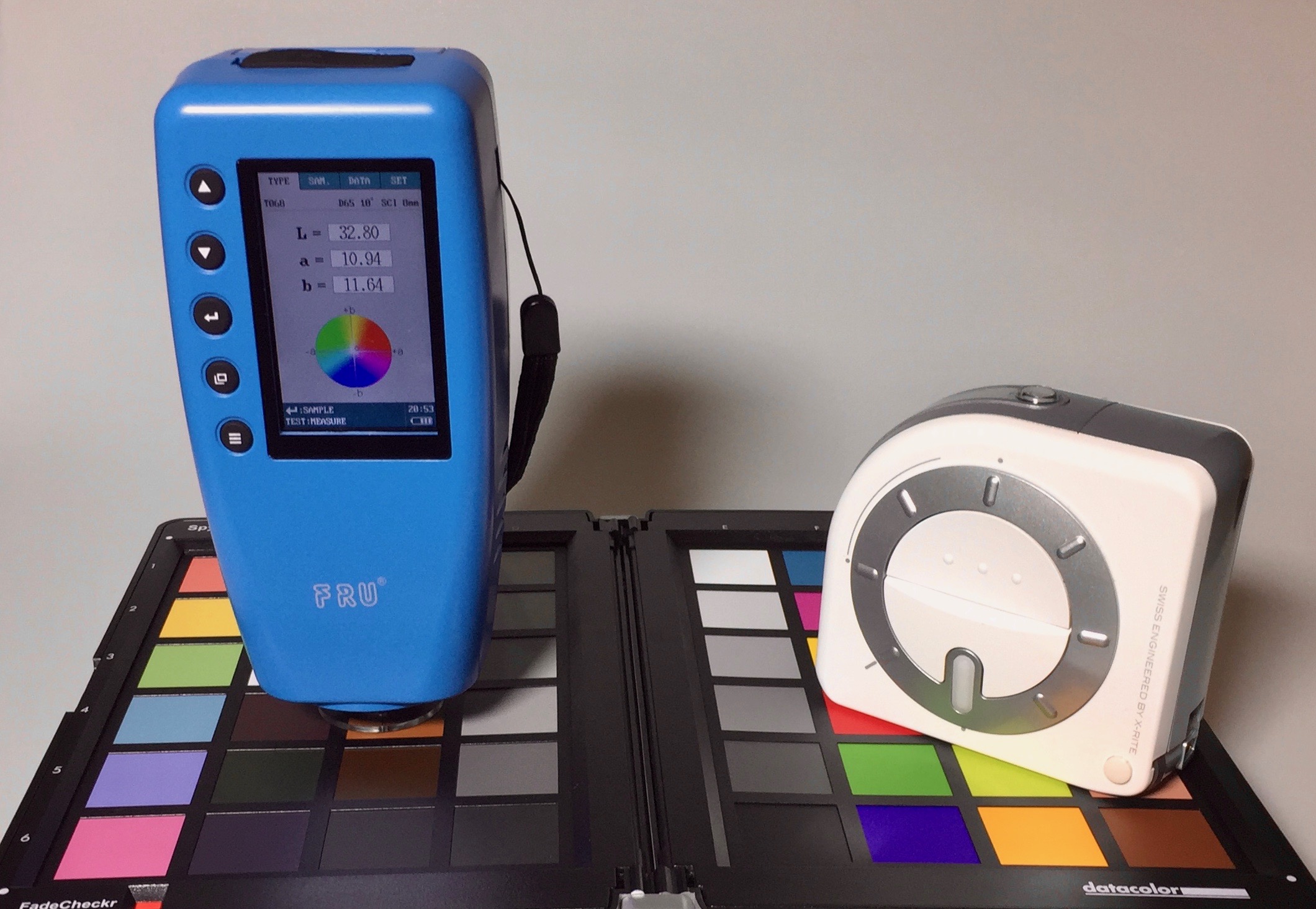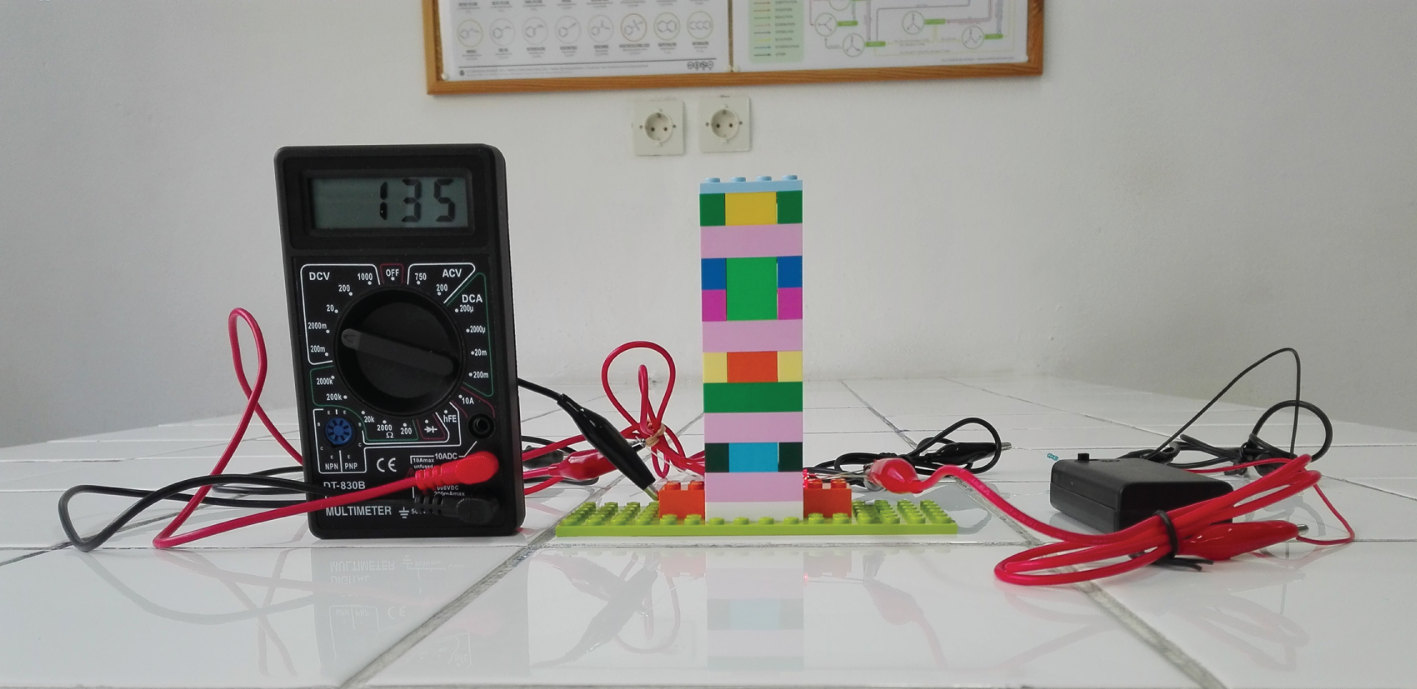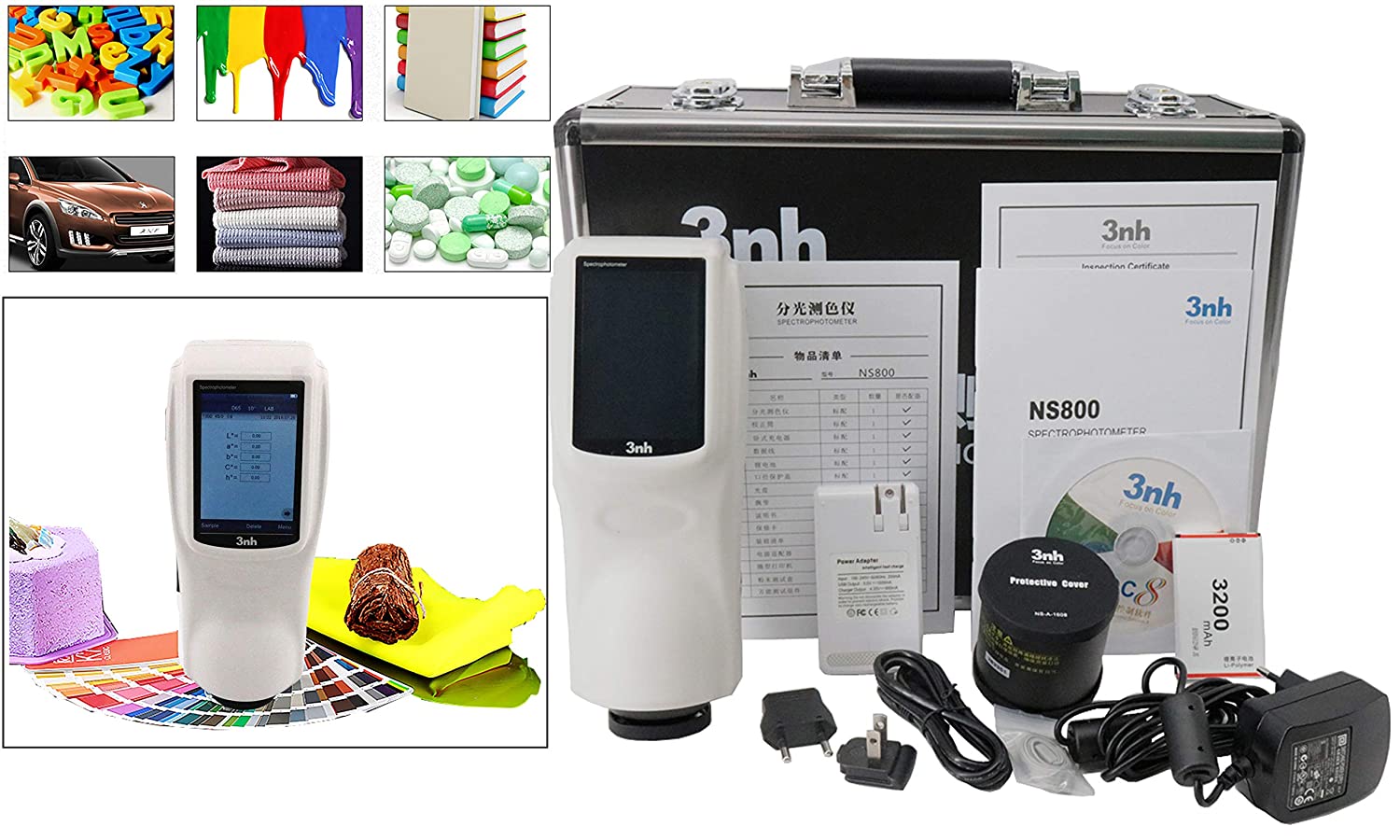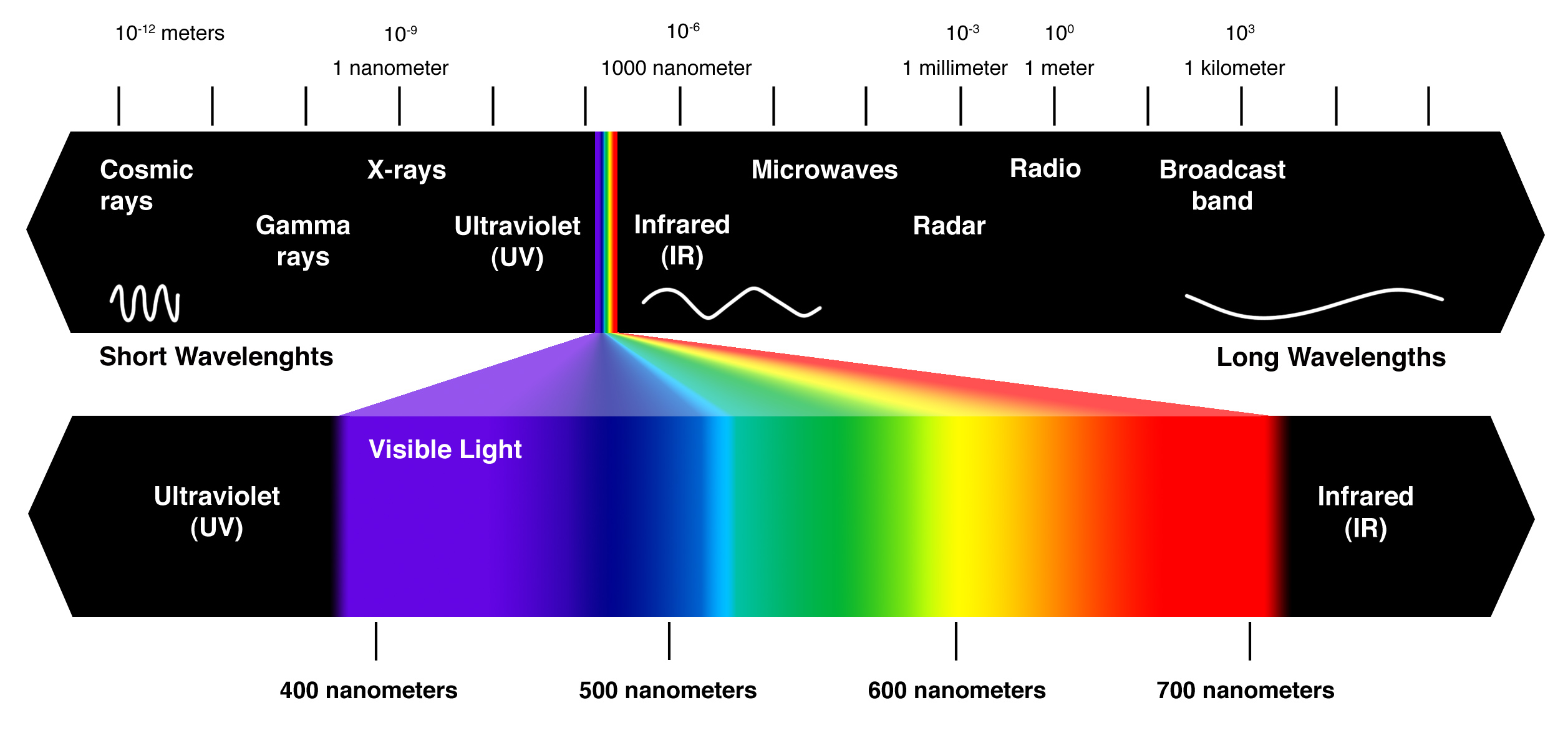Colorimeters and spectrophotometers are two types of color measurement instruments that find use to capture, analyze, and communicate color. One of the similarities between a colorimeter and a spectrophotometer is that both measure sample absorbance to determine analyte concentrations. A colorimeter or spectrophotometer measures any test substance that is itself colored or can be reacted to produce a color. Both devices provide data obtained over the same range of visible wavelengths, but there are some differences when they deal with this data. This article will help explain spectrophotometer vs colorimeter. So read this new blog in Linquip to find out more about them.
What Is A Colorimeter?
A colorimeter is a light-sensitive instrument used for measuring the transmittance and absorbance of light passing through a liquid sample. The instrument measures the intensity or concentration of the color that develops upon introducing a specific reagent into a solution. It provides an objective evaluation of color characteristics based on light passing through the primary filters of red, green, and blue. It simulates how the human eye perceives color.
A colorimeter can determine colorimetric values, under a single illuminant easily and is used primarily for reflectance measurements. However, a colorimeter is not appropriate for complex color analysis such as metamerism, colorant strength, or recipe formulation. There are two types of colorimeters, color densitometers, and color photometers. Color densitometers measure the density of primary colors whereas color photometer measures the color reflection and transmission.
What Is A Spectrophotometer?
The spectrophotometer is an analytical instrument used to quantitatively measure the transmission or reflection of visible light, UV light, or infrared light. The spectrophotometer is the most precise, accurate, and sophisticated color measurement instrument available for color quality control and color formulation. Spectrophotometers are widely used in various disciplines such as physics, molecular biology, chemistry, and biochemistry. It is available as bench-top models for quality control and research labs or portable for factories or fieldwork.
Spectrophotometer performs the full-spectrum color measurement. It measures the spectral reflectance or transmittance of an object across the full spectrum of visible wavelengths, from 400mm to 700mm. The instruments’ greater specificity makes them the instrument of choice for color formulation, specification of standards and tolerances, inter-plant color communication, and quality control of color.
Spectrophotometer VS Colorimeter
Understanding the factors that distinguish a colorimeter from a spectrophotometer and the principle of colorimeter and spectrophotometer can help you determine which tool best optimizes your management workflow. Several factors play an essential role in this difference. The following table highlights the spectrophotometer vs colorimeter.
Nature
- The spectrophotometer is composed of moving parts and it is heavier in weight and only good for bench use.
- The colorimeter is made up of stationary parts and it is lighter in weight and therefore good for field use.
Components
- The spectrophotometer is composed of a sensor, and data processor and sometimes includes computer software. It has many available illuminant or observer combinations.
- The colorimeter is composed of a sensor and a simple data processor. It has only a set illuminant and observer combination.
Capability
- The spectrophotometer can indirectly calculate psychophysical information.
- Colorimetric data directly read and provide tristimulus values such as XYZ, G, b, d, etc.
Complexity
- The spectrophotometer is generally a more complex instrument than a colorimeter.
- The colorimeter is generally a rugged and less complex instrument than a spectrophotometer.
Main Function
- The spectrophotometer measures the amount of light that passes through a sample.
- The colorimeter measures the absorbance of light.
Wavelength
- The spectrophotometer uses a wide range of wavelengths in the ultraviolet, visible, and infrared zones.
- The colorimeter uses fixed wavelengths in the visible range only.
Wavelength Selector
- wavelength selector of the spectrophotometer is a monochromator, wavelength range.
- The wavelength selector of the colorimeter is a color filter, fixed wavelength.
Common Uses
- The spectrophotometer finds use in color measurement, color formulation, monitoring of color accuracy throughout production, maintenance of color consistency throughout the supply chain, identification of metamerism, measurement of opacity and haze, color quality control, and detection of impurities
- The colorimeter generally finds use in straightforward color identification, comparison of similar colors and shades, measurement of color strength, measurement of colorfastness, color quality control, source of reference for determining color standards, and assessment of non-metameric color batches
Functionality
- The spectrophotometer measures the actual color within the human visible light wavelength.
- The colorimeter quantifies color by measuring the three primary color components of light.
Data Display
- In a spectrophotometer, data is produced and recorded via computer software.
- In a colorimeter, data is displayed on a digital or analog output.
Application
- The spectrophotometer can be used in the identification and quantification studies of inorganic and organic biochemical molecules.
- The colorimeter can be used to determine the concentration of an individual compound based on the amount of absorbance.
Working
- The spectrophotometer works well for color formulation, measurement of metamerism, and variable illuminant/observer conditions.
- The colorimeter works well for routine comparisons of similar colors and adjustment of small color differences under constant conditions.
Isolation of BroadBand
- The spectrophotometer uses an interference filter or a grating and prism to isolate a narrow band of wavelengths.
- The colorimeter isolates a broad band of wavelengths using tristimulus absorption filters.
Light Source
- The spectrophotometer light source is a lamp (tungsten, xenon, deuterium), wavelength range.
- The colorimeter light source is LED, fixed wavelength
Cost
- The spectrophotometer is more costly when compared to the colorimeter.
- The colorimeter is cheaper when compared to the spectrophotometer.
Examples
- Examples of spectrophotometer instruments include: HunterLab, ColorFlexes, COlorQuests, LabScans, MiniScans, SpectraProbes, and UltraScans
- Examples of colorimeter instruments include: the HunterLab D25 series and ColorTrend HT
Deciding the right color measurement device for you depends on your desired application, price range, and instrument complexity. While a colorimeter may be more economical, it only measures the absorbance of specific colors and cannot identify metamerism. It may be ideal for those seeking basic color measurement or control without complex color analysis.
One of the advantages of a spectrophotometer over a colorimeter is that it may offer much more precision and advanced features and provide more accurate data; making it useful for a broad range of applications in R&D, color formulation, and quality control but it tends to be a more expensive option. Be sure to consider your industry when deciding which instrument best supports your workflow.
So, there you have every single fact about the difference between a spectrophotometer and a colorimeter. If you enjoyed this article in Linquip, let us know by leaving a reply in the comment section. Is there any question we can help you with? Feel free to sign up on our website to get the most professional advice from our experts.
Buy Equipment or Ask for a Service
By using Linquip RFQ Service, you can expect to receive quotations from various suppliers across multiple industries and regions.
Click Here to Request a Quotation From Suppliers and Service Providers
Read More In Linquip
- A Quick Look at Types of Spectrophotometers
- What Wikipedia Can’t Tell You About How Does a Spectrophotometer Work
- Beginners Guide: What Is a Spectrophotometer
- Want To Know Everything About Spectrometer vs Spectrophotometer? Now You Can!
- A Cheat Sheet For Types of Spectrophotometer
- The Difference Between Colorimeter and Spectrophotometer
- Your Guide to Colorimeter Principle








